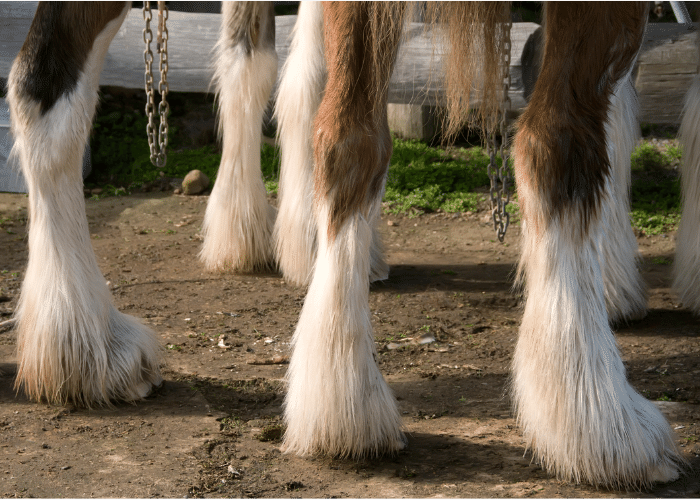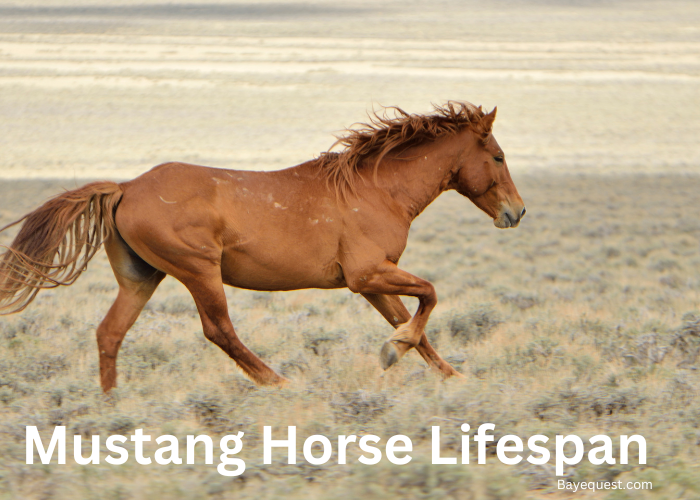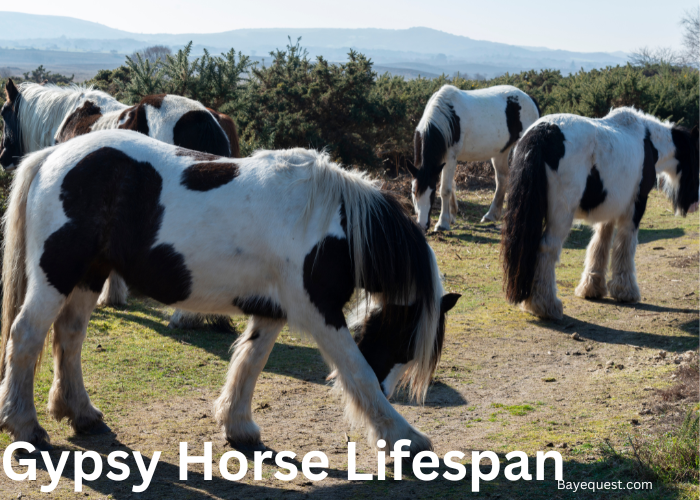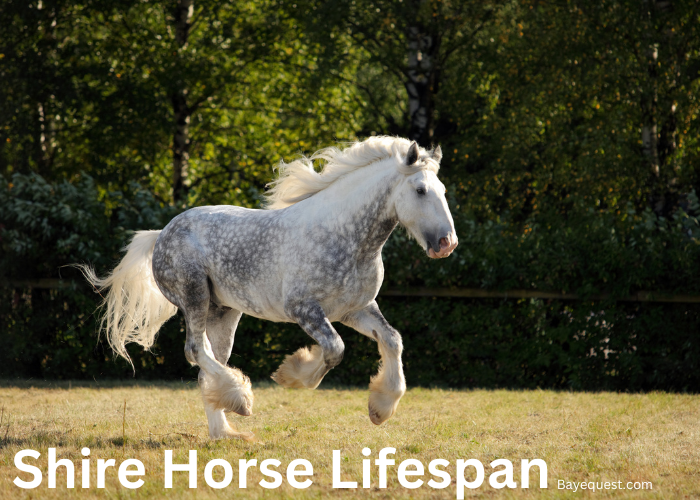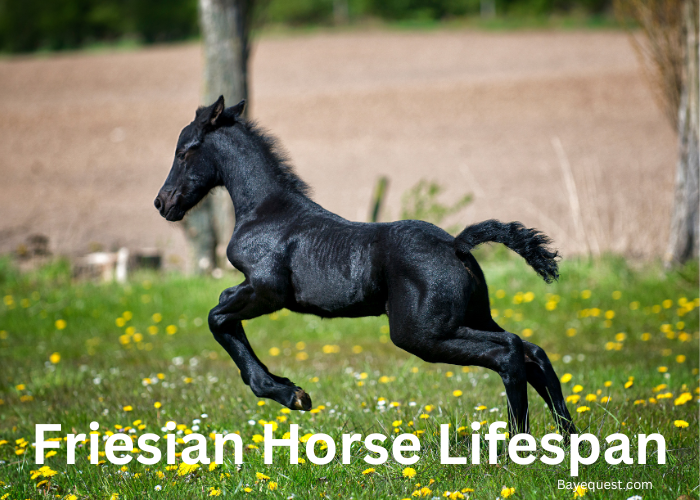Horses with hairy feet possess a unique charm and elegance. In this blog, we’ll explore 25 types of these fascinating breeds. We’ll delve into the history and function behind their distinctive feathering.
These features aren’t just for looks. They often signify breeds from cooler climates or those bred for specific tasks.
If you appreciate the beauty of nature, join us as we trot through the world of these unique breeds and discover what makes their feathered feet so special.
25 Types of Horses With Hairy Feet
- Shire Horse
- Clydesdale
- Friesian
- Gypsy Vanner
- Percheron
- Belgian Draft
- Suffolk Punch
- Fell Pony
- Haflinger
- Norwegian Fjord
- Dales Pony
- Ardennes
- Jutland
- American Cream Draft
- Black Forest Horse
- North Swedish Horse
- Boulonnais
- Italian Heavy Draft
- Vladimir Draft Horses
- Dutch Draft
- Australian Draught Horse
- Icelandic Horse
- Welsh Cob (Section D)
- Shetland Pony
- Kerry Bog Pony
Why Do Horses Have Feathered Feet?
Horses with feathered feet have this trait for several reasons. First, it’s all about where they come from. Many of these breeds were developed in cold, wet climates.
The thick hair around their hooves and legs helped protect them from the chill and moisture, keeping them warm and dry. Think of it as built-in boots that also fend off mud and ice.
Another reason is work. Breeds like the Clydesdale and Shire were made to pull heavy loads. The feathering on their feet protected them and showed their strength and endurance, qualities needed for hard labor.
Lastly, there’s the show factor. Over time, as horses moved from fields to show rings, those with striking feathered feet caught more eyes.
This unique feature symbolised beauty and elegance, making these horses stand out in parades and competitions.
So, whether it was for practicality, work, or beauty, feathered feet have served horses and their human companions well across the centuries.
Read also: Horse riding styles.
25 Types of Horses WIth Hairy Feet
Let’s talk about some amazing horses with hair on feet:
1. Shire Horse
Shire Horses steps out of England’s heartland, boasting the title of the world’s tallest horse breed. These gentle giants are calm and cooperative.
Their large, feathered feet aren’t just for show. They’re a nod to their heritage, designed for strength and durability in tough conditions.
Originally bred for heavy farm and industrial work, today’s Shires find roles as riding horses. You’ll find them in parades and pulling competitions, showcasing their remarkable power and gentleness.
2. Clydesdale
From the rolling hills of Scotland comes the Clydesdale, a breed as robust in spirit as it is in stature. Clydesdales are big and carry themselves with an air of majesty.
Known for their friendly demeanor and outgoing personalities, these horses were once the go-to for heavy farm work and pulling the heavy loads.
Consider the Clydesdale horse with hair on feet. Today, they’re the stars of commercials and parades, captivating audiences with their grandeur and charm.
Their adaptability from fieldwork to show rings speaks to their versatile and affable nature.
Related read: What is the Difference Between Clydesdale and Regular Horse?
3. Friesian
The Friesian horse, with origins traced back to the Netherlands, embodies elegance. They have a gleaming black coat, a long, wavy mane, and a tail, all complemented by their distinctive feathered feet.
Beyond their beauty, Friesians are intelligent and eager to please. This makes them excellent performers in dressage and show arenas.
They have always been used as war horses. Today, they excel in carriage driving and as under-saddle mounts, offering riders a rare blend of grace and power.
4. Gypsy Vanner
The Gypsy Vanner, also known as the Irish Cob, brings a story of travel and color. Originating from the British Isles and developed by the Romani people, this breed was meant to pull the vardo, or living wagon, in which they lived.
Compact and muscular, the Gypsy Vanner’s lush, feathered legs make it stand out in any crowd. Their temperament is as beautiful as their appearance.
Ideal for both riding and driving, the Gypsy Vanner has gained a following for its versatility, stunning looks, and amiable nature.
5. Percheron
The Percheron hails from France, carrying a legacy of strength and stamina. This breed is less about the feathers and more about what lies beneath. That is a muscular build, a steadfast heart, and an incredible work ethic.
Percherons are renowned for their intelligence and willing temperament. This makes them them a favorite for heavy draft work, farm labor, and even as elegant carriage horses.
Despite their size, they move with a surprising grace, a testament to their versatility. From pulling medieval knights to modern carriages and everything in between, the Percheron remains a symbol of enduring strength and versatility.
Read also: How much do Percherons breeds cost?
6. Belgian Draft
The Belgian Draft comes from Belgium, a country known for producing some of the world’s most powerful horses. These horses are like the bodybuilders of the equine world: muscular and strong, yet they carry themselves with a calm grace.
Their legs, adorned with feathering, hint at their hardworking heritage. Belgian Drafts are known for their kind nature and willingness to work, making them a favorite for heavy pulling tasks and farm work.
Today, they also capture hearts in shows and parades, showcasing their strength and gentle temperament.
7. Suffolk Punch
The Suffolk Punch, an emblem of England, is a breed that’s all about endurance and diligence. Unique among draft breeds for its chestnut color, this horse is compact and powerful, designed for long hours of farm work.
What sets the Suffolk apart is its striking appearance and amiable disposition. Known for being easy-going and hardworking, the Suffolk Punch is a reliable partner in both fieldwork and leisure riding. It embodies the essence of a draft horse with a gentle soul.
8. Fell Pony
Hailing from the mountainous regions of England, the Fell Pony is a versatile and sturdy little horse. Despite its smaller size, it’s got the heart of a giant, capable of carrying adults over rough terrain with ease.
Its feathered legs are a nod to its ability to navigate the wet, rugged landscapes of its homeland. Fells are known for their agility, intelligence, and friendly nature.
This makes them excellent companions for riding, driving, and competitive sports. They embody the spirit of endurance, proving that great things often come in small packages.
9. Haflinger
From the picturesque Alps of Austria and Italy, the Haflinger shines like a golden beacon. This horse is instantly recognizable by its chestnut coat and flaxen mane and tail, with just the right amount of feathering around its hooves.
What makes the Haflinger stand out, though, is its sunny disposition. Friendly, patient, and eager to please, they’re as good with families as they are on the trail or in the field.
Haflingers are true all-rounders, adept at everything from farm work to therapeutic riding, embodying the joy of horse ownership.
10. Norwegian Fjord
The Norwegian Fjord is one of the world’s oldest and most distinct horse breeds. With a history stretching back over 2,000 years, these horses are living symbols of Norway.
They’re easily recognized by their muscular build, dun coat, and striking mane, often cut to stand up straight, highlighting the horse’s strong neck.
But it’s not just their look that’s impressive; Fjords are known for their gentle nature, intelligence, and versatility. They’re as comfortable pulling a plow as they are under saddle, making them beloved by equestrians for leisure and labor alike.
Their calm demeanor and sturdiness make them ideal family horses, suited to riders of all ages and skills.
11. Dales Pony
The Dales Pony comes from the rugged hills of Northern England. It’s sturdy, resilient, and full of spirit. Known for its strength and endurance, the Dales Pony has a thick mane and tail, with feathering around its hooves.
This breed is friendly, intelligent, and willing to work, making it perfect for riding, driving, and even competitive sports. Its ability to navigate difficult terrains with ease makes the Dales Pony a favorite among outdoor enthusiasts.
12. Ardennes
One of the oldest draft horse breeds, the Ardennes hails from the Ardennes area along the borders of Belgium, France, and Luxembourg. These horses are built like tanks, with a broad chest and strong legs, modestly feathered.
Despite their imposing appearance, Ardennes horses are known for their docile and hardworking nature. They were once warriors’ companions in battle, and today, they’re used for heavy draft work and as gentle riding horses.
13. Jutland
Originating from Denmark, Jutland is a heavy draft horse known for its calm demeanour and strength. Compact and muscular, with feathered legs, the Jutland has been used for farming and pulling beer wagons.
They’re easy to recognize by their chestnut color, often with a flaxen mane and tail. Jutlands are praised for their good temperament and willingness to work.
14. American Cream Draft
The American Cream Draft is the only draft horse breed developed in the United States. They are distinguished by their beautiful cream color and amber eyes.
These horses are medium-sized with a calm and willing nature. They possess a strong work ethic, making them versatile for farming, shows, and parades.
The American Cream Draft is a symbol of American heritage, embodying beauty, strength, and a gentle spirit.
15. Black Forest Horse
Straight from the Black Forest region of Germany, the Black Forest Horse is a sight to behold. With a dark chestnut coat and a lush mane and tail that contrast starkly against its lighter feathered legs, this horse is known for its beauty.
But it’s not just about looks; the Black Forest Horse is hardworking, gentle, and eager to please. Traditionally used for forestry and farm work, today they’re also cherished as riding horses.
Their friendly nature makes them suitable for all kinds of equestrian activities.
Also, check out other breeds of black horses in our guide.
16. North Swedish Horse
The North Swedish Horse is a true cold climate champion from Sweden. It’s compact, strong, and versatile, known for its ability to work in harsh conditions.
This breed has a calm and friendly nature and is great for forestry, agriculture, and leisure activities. Its sturdy build and feathered legs make it a reliable partner in both work and play, embodying the rugged beauty of its homeland.
17. Boulonnais
The Boulonnais, or the “White Marble Horse,” comes from France. This breed is elegant, with a muscular build and a striking appearance that includes a beautiful, often white, coat.
Despite their powerful physique, Boulonnais horses are known for their gentle temperament. They were originally used for heavy draft work but now they also excel in shows and as riding horses.
18. Italian Heavy Draft
Originating from Italy, the Italian Heavy Draft is known for its strength and hardiness. This breed is compact and muscular, designed for heavy work.
They are calm and docile, making them excellent workers and companions. Traditionally used in agriculture and for pulling heavy loads, today, they’re also appreciated in leisure riding and therapeutic settings.
19. Vladimir Draft Horses
From Russia, the Vladimir Draft Horse is a breed known for its endurance, strength, and ability to work in cold climates. They have a solid build and a calm, willing disposition.
Their feathered legs not only protect them from the cold but also add to their majestic appearance. Originally bred for farm work and pulling heavy loads, Vladimir Draft Horses are now also used in riding and for showing, proving their versatility and gentle temperament.
20. Dutch Draft
The Dutch Draft comes from the Netherlands, bred for heavy farm work. They are one of the strongest draft breeds, known for their calm and gentle nature.
With a short, muscular body and feathered legs, the Dutch Draft is a hard worker, well-suited to pulling heavy loads. Despite their power, they are easy to handle and make great work partners and leisure horses.
21. Australian Draught Horse
The Australian Draught Horse is Australia’s own. It comes from mixing Clydesdale, Shire, Percheron, and Suffolk Punch breeds.
It’s strong, flexible, and calm, perfect for work, riding, and driving. This horse is big and sometimes has feathered legs. It’s also friendly, making it great for everyone.
22. Icelandic Horse
The Icelandic Horse is small but tough. It’s from Iceland and can handle cold well. It has a special smooth gait called the tölt.
These horses are friendly, smart, and like being around people. They can carry adults and are good for riding and competitions.
23. Welsh Cob (Section D)
The Welsh Cob is beautiful and strong. It’s great at dressage, jumping, driving, and going on long rides. This horse is smart and likes to work.
It’s good for sports and fun rides outside. The Welsh Cob can do a lot of things and enjoys activities.
24. Shetland Pony
The Shetland Pony is from Scotland’s Shetland Isles. It’s small but can pull a lot of weight.
It has a thick coat for cold weather. Shetland Ponies are smart and nice but can be lively. They’re used for riding, pulling carts, and as pets, especially for kids.
25. Kerry Bog Pony
The Kerry Bog Pony comes from Ireland. It’s small, strong, and used to work in peat bogs. This pony is good on different terrains, friendly, and easy for kids and beginners.
Kerry Bog Ponies are now used for shows, riding, and as family pets. They’re part of Ireland’s horse tradition.
How to Care for Horses With Hair on Hooves
Caring for horses with hair on their feet requires special attention to keep them healthy and comfortable. Here’s a straightforward guide:
1. Regular cleaning
- Daily checks: Even if you don’t clean every day, check the feathers for mud, dirt, or ice balls.
- Wash regularly: Use a mild shampoo to wash the feathers. This helps prevent skin infections.
2. Drying properly
- After washing: Ensure the feathers are thoroughly dried after washing to prevent moisture-related issues, like rain rot or mud fever.
- Use towels: Gently pat the feathers dry with towels. If it’s warm, you can let them air dry outside.
3. Grooming
- Brush gently: Use a soft brush to remove tangles from the feathers. Start from the bottom and work your way up.
- Detangling products: Apply a detangler to help with knots and to keep the feathers smooth.
4. Monitoring health
- Look for signs: Regularly check for signs of skin problems like scabs, redness, or swelling.
- Prompt treatment: If you find any issues, treat them immediately or consult a vet.
5. Trimming (If necessary)
- Trim wisely: In some cases, you might need to trim the feathers to prevent excessive mud collection or to treat skin conditions.
- Professional help: If you’re not comfortable trimming yourself, seek help from a professional groomer or farrier.
6. Protecting in wet conditions
- Use leg wraps: When it’s muddy or wet, consider using waterproof leg wraps to protect the feathers.
- Avoid standing water: Try to keep feathered horses out of wet, muddy pastures to reduce the risk of skin issues.
7. Regular veterinary checks
- Routine exams: Have your vet check the feathered areas during regular health exams.
- Advice on care: Your vet can provide specific advice tailored to your horse’s needs.
Conclusion
And there you have it—our journey through the world of horses with fluffy feet comes to a close. From the towering Shire to the hardy Icelandic, each breed carries a story as unique as their feathered legs.
Caring for them takes a bit more love and patience, especially when it comes to those beautiful, feathered feet. But ask any owner, and they’ll tell you: it’s all worth it.
So, whether you’re a horse lover, a rider, or just someone who appreciates these majestic animals’ beauty, remember: the hairy feet often carry the biggest hearts.
Thanks for trotting along with us. Who knows? Maybe one day, you’ll find yourself brushing the feathers of a horse friend of your own.




